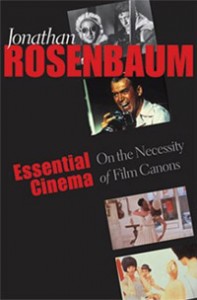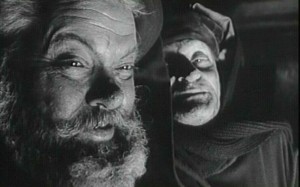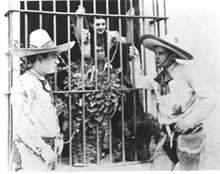My Afterword to the second edition (paperback) of my 2004 collection Essential Cinema: On the Necessity of Film Canons. — J.R.

“Unwitting omissions —- films I’ll eventually hate myself for having overlooked — are inevitable,” I wrote in December 2003, introducing my list of 1,000 personal favorites, “largely because I haven’t come up with any sure-fire method of recalling or tabulating everything I’ve seen, or even everything I can remember seeing.” Even when I wrote this, I could scarcely imagine I’d omit a film as important as Chimes at Midnight (1966) from my list —- an oversight that illustrates my point all too well. No less vexing was the absence of Flaming Creatures(1963), a film celebrated elsewhere in the same book, and the silly blunder of renaming Crimson Gold (2003) Crimson Red — though at least I was able to correct these latter gaffes, as well as restore a missing accent to Tangos volés (2002), in the book’s second printing. (In the case of Flaming Creatures, this addition was managed ecologically by omitting The Disorderly Orderly [1964] from my list on the same page.)

I discovered the omission of Chimes at Midnight later, from a blog, while cruising the Internet. Read more
Published by the web site Fandor on January 4, 2011. — J.R.

It’s widely and justly believed that the two greatest plays of Eugene O’Neill (1888-1953) were both written near the tail end of his career — The Iceman Cometh, completed in 1939 and first staged in 1946, and Long Day’s Journey into Night, completed in 1941 and produced only posthumously, in 1956. What’s less widely known is that the action of both plays unfolds during the same summer, 1912, when O’Neill was 24, after having attempted to commit suicide the previous spring. As his biographers Arthur and Barbara Gelb note in their 2000 O’Neill: Life with Monte Cristo (New York: Applause), “the plays follow almost literally the chronology of O’Neill’s youthful years, with Iceman (written first) set in ‘summer 1912’ and Long Day’s Journey (which can be regarded as its sequel) set on ‘a day in August, 1912’.”
Both late masterpieces are obsessive distillations of a lifetime of brooding, with the three-hour 1962 film version of Long Day’s Journey into Night directed by Sidney Lumet and the four-hour 1973 film version of The Iceman Cometh directed by John Frankenheimer having served, for many filmgoers, as the versions of reference. Read more
From the Chicago Reader (May 21, 2004). — J.R.

Directed by Fernando de Fuentes, this popular 1936 feature helped launch a new genre in Mexican movies, the comedia ranchera, which mixed comedy and music in rural settings. It tracks the long-term friendship between a ranch owner (Rene Cardona) and the orphan who becomes his foreman (Tito Guizar); both fall for the same woman (Esther Fernandez), a conflict that’s brought to a head by a kind of musical duel. This is more nuanced than one might expect in the handling of gender and class, and the populist fervor that’s become part of the period flavor is infectious. The graceful cinematography is by the great Gabriel Figueroa, best known for later collaborations with John Ford and Luis Buñuel. In Spanish with subtitles. 100 min. Read more




